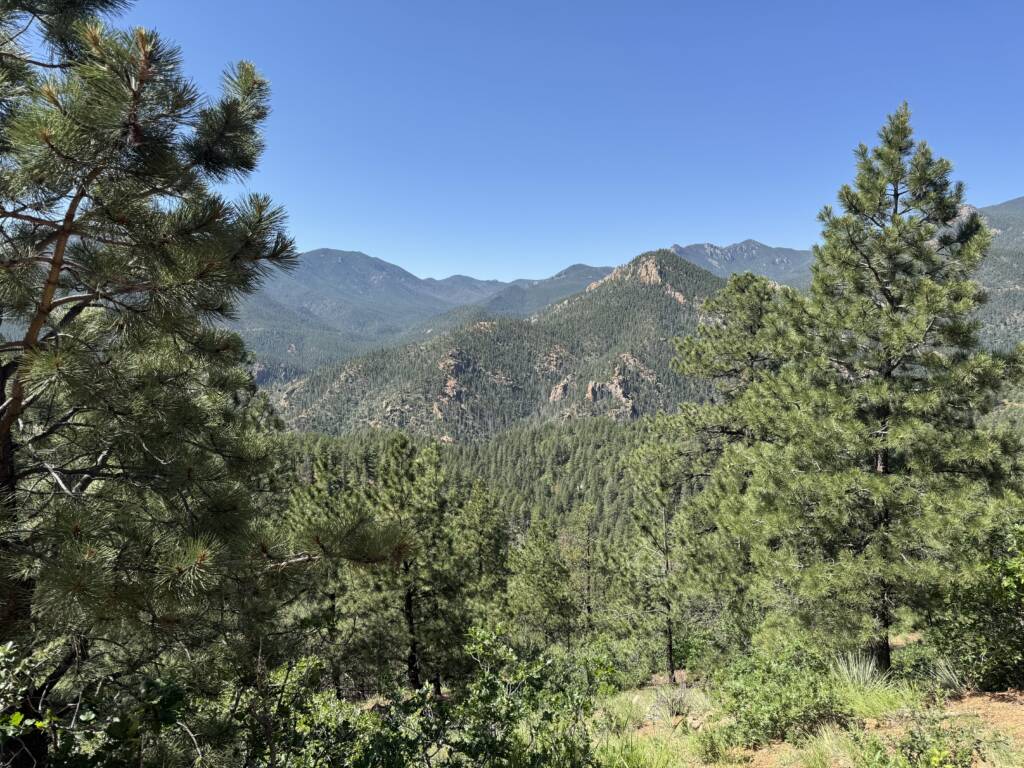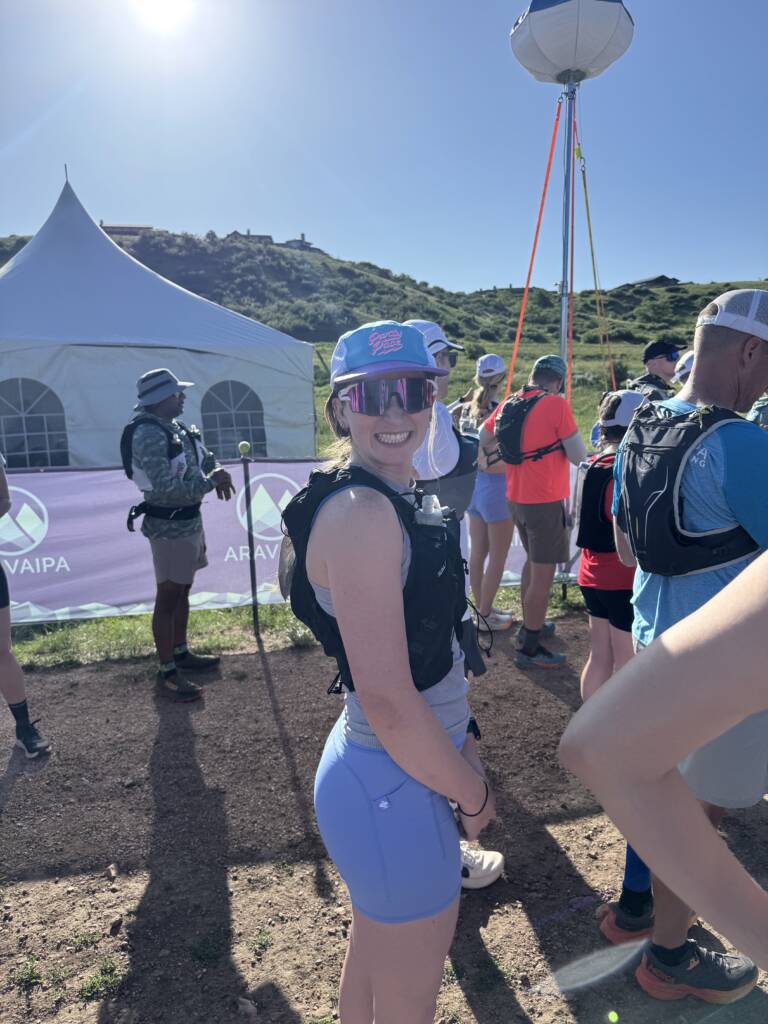This past weekend, I took on the Ring the Springs 35K—a tough, technical loop around Colorado Springs that chews you up with 3,500 feet of elevation gain. Add to that unrelenting heat, dry air, and long stretches of exposed trail, and you’ve got a course that tests every part of you: body, brain, and gut. Grit got me to the finish, but not without some valuable lessons.
I finished it. Not in record time, not effortlessly—but with grit, I finished strong, wiser, and with a few lessons now engrained in muscle memory. Here’s what I learned, and what science backs up about thriving—not just surviving—during a hot endurance event like this one.
Ring the Springs 35K Course
The Ring the Springs course is no joke. Starting at Rock Ledge Ranch, it takes you on a grand tour of the ridgelines and high trails surrounding Colorado Springs. It links together city streets, Garden of the Gods, Cheyenne Mountain, and Pike National Forest — essentially one big ring of beauty and brutality.
Technical single track, exposed climbs, and quad-shredding descents make for a real mental and physical roller coaster. I hit my first wall within miles, feeling the effects of heat and elevation gain. By mile 20, it was the promise of juicy watermelon and the one I made to myself that kept me on to the finish.
After crossing the finish line, I relished the feeling of success and gratitude I had for my body. I swore off too much reflection until I was able to rest and give my body some fuel. Now, looking back, I see not only opportunities for growth in endurance racing but also decisions I made during this race that allowed me to carry on.

Lesson One: Hydrate More Than You Think
One of the biggest takeaways: start hydrating well before race day. Not just the night before—I’m talking 48–72 hours out. Unfortunately, I had a big week before the race – I stayed on top of my hydration the day before the race, but I should’ve stressed the week leading up to it. Plus, living in Colorado during a heat wave is no easy feat.
Being mindful about hydration is a daily task and should be taken more seriously when prepping for a long event. Heat stress increases sweat rate, and if you start even slightly dehydrated, you’re playing catch-up from mile one.
According to the American College of Sports Medicine, even a 2% loss in body weight from dehydration can lead to noticeable performance declines, including reduced endurance, increased fatigue, and impaired thermoregulation. In other words: you overheat faster and fade quicker.
What I included in my hydration prep and planning:
- Drinking electrolyte-rich fluids two days leading up.
- Continuously sipping on fluids throughout the race rather than chugging at aid stations.
- Having two types of water in my pack
- Regular water for easy drinking while nauseous on trail
- Carb/Electrolyte mix in one for replenishing during strong efforts
Lesson Two: Dial in Your Nutrition
In hot races, nutrition isn’t just fuel—it’s survival. You can’t just rely on mental grit to get you through long stretches of exposed sun and hard exertion. You need to replenish what you are using – carbs, salt, and even mental capacity.
What to aim for:
- 30–60g of carbs per hour, depending on intensity.
- 400–700mg of sodium per hour in hot conditions (via sports drinks, salt caps, or food).
- Glucose + fructose blends (like some gels or drink mixes) to maximize carb absorption.
Use the same nutrition in training as you plan to race with. GI distress is a REAL thing. I haven’t struggled with GI stuff in races before, but this one put me through it. The combination of heat and exertion made me well acquainted with nausea and gut cramping. I couldn’t get enough fuel in me to keep my whole self running smoothly. But, knowing that I was using something I knew sat well with me helped ease my mind about continuing to fuel while simultaneously uninterested in digesting anything but Ginger Ale.

Lesson Three: Choose the Right Clothing
Hot conditions make your gear choices even more important. This was something I could’ve been smarter about – I went for a “cute” look. 4” blue running shorts, a gray tank top, my “party pace” hat, and my Salomon pack. Sounds okay, right? Well, I didn’t consider the reapplication of sunscreen, so all the exposed skin got FRIED. I am not reaping the consequences for not being mindful about sun exposure.
What I learned from other runners:
- Lightweight, moisture-wicking, and light-colored clothing reflects sunlight and helps sweat evaporate
- Choose a long sleeve SPF sun shirt. Something that feels light-weight but good skin coverage.
- Ventilation zones
- Pick a flowy short that allows for air ventilation allowing for heat to dissipate
- A technical cap or buff
- Although I used a ventilated sports hat – I wish I dipped it in the cold water at aid stations to allow for sustained opportunity to cool down
- I also saw people with ice bandanas around their necks – something I will certainly use in my next race.
Mental Grit: The Real Game
Physical prep is essential, but it’s the mental game that makes or breaks you while you are all alone, suffering. Climbing switchbacks while the heat is bouncing off the rocks takes physical strength but also the willingness to continue – to say, “this sucks, but I have 5 more miles – let’s keep going.”
Here’s what helped me:
Chunk the Course
I do this CONSISTENTLY. Not just while running hard races, but while doing training runs and even traveling with a toddler. Rather than thinking “13 more miles to go,” I broke it into segments:
- “Just get to the next aid station – there you will get some ice and snacks.”
- “Run for half a mile and then power hike the next incline”
- “Get to the top of this section and the downhill is right there”
- “At mile 7, grab your headphones and listen to some music for 3 miles.”
Mantras
“Forward is a pace.”
“You’re stronger than you feel.”
“You are capable of handling hard tasks.”
Mindfulness over Misery
When things got overwhelming, I shifted focus: trees, views, rhythm of my footsteps. I did something simple, like taking a picture of the view. The more I resisted the discomfort, the worse it felt. Accepting it helped ease it. I reminded myself that the moment was temporary – I would soon be crossing a finish line that I put hard work into earning.
How I Feel Now
The Ring the Springs 35K gave me a full-body (and soul) lesson in humility, preparation, and perseverance. The elevation gain and heat were brutal, but not unbeatable. With the right hydration, nutrition, gear, and mindset (grit), these challenges become part of the reward.
If you’re thinking of tackling a hot endurance race, start early, respect the conditions, and train your brain (grit can be trained) as much as your body.
And whatever you do—hydrate and reapply your sunscreen.


